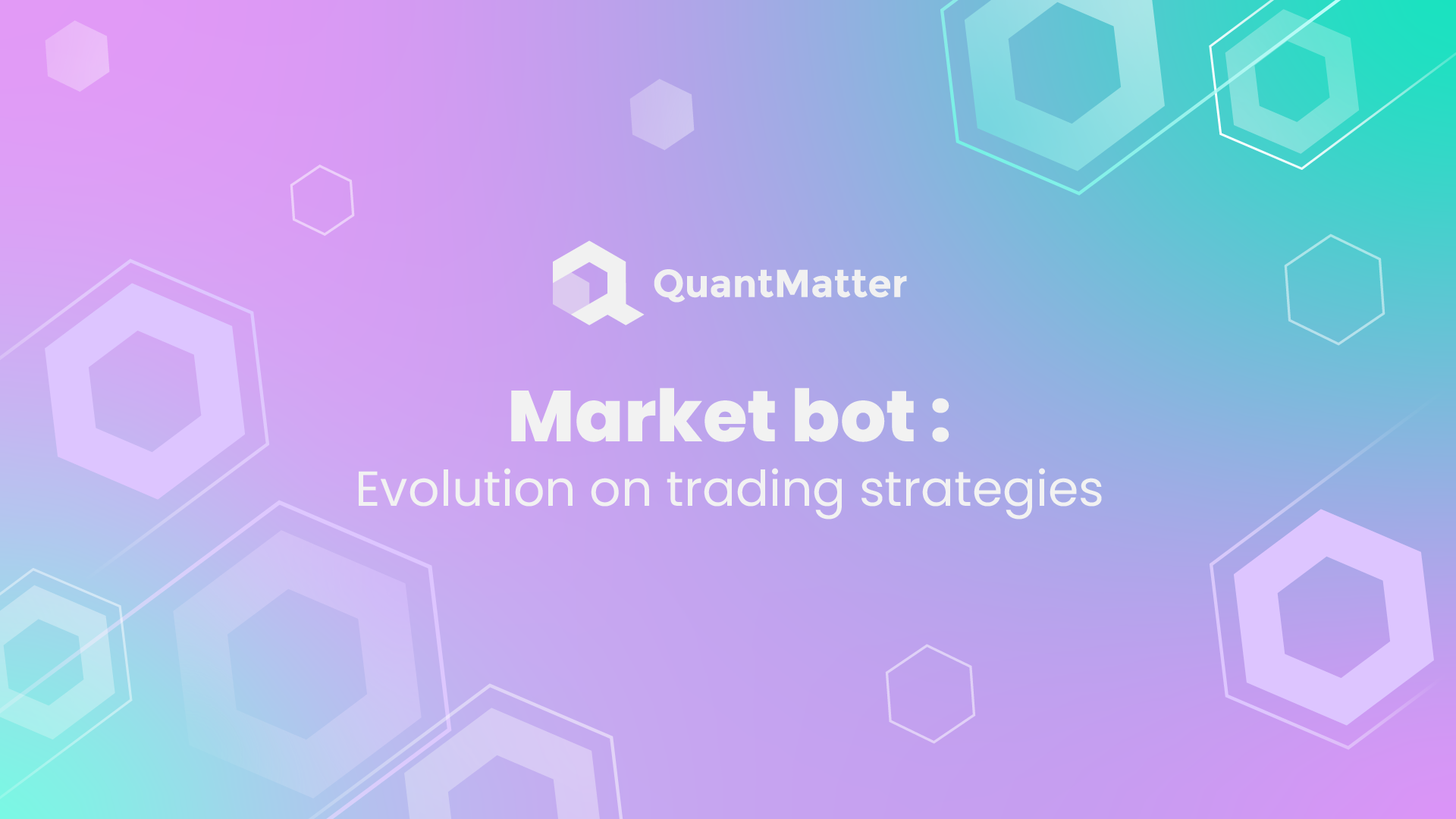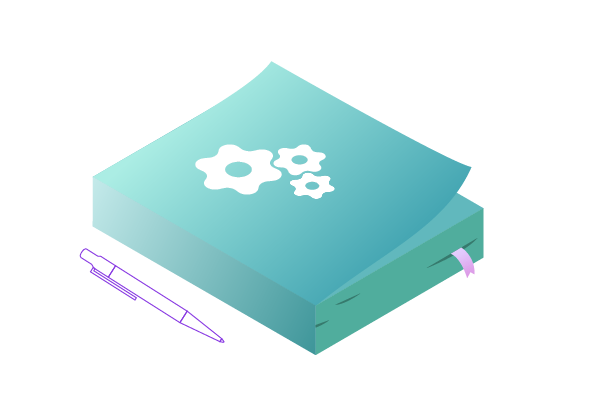
Technology has played a pivotal role in reshaping the way trading and investment strategies are executed, ushering in a new era of innovation and efficiency. Among the most notable advancements in this domain is the emergence of market bots. These intelligent, automated systems have not only simplified trading but have also revolutionized the investment game for both individual and institutional investors, fundamentally altering the landscape of financial markets.
In this comprehensive article, we will embark on an in-depth exploration of the intriguing world of market bots. We will delve deep into the intricacies of these digital entities, unraveling what they are, understanding how they work, and analyzing their profound impact on the intricate web of global financial markets. This technological evolution has far-reaching consequences that touch upon aspects of trading, investment, and even market stability.
What is Market Bot?

Market bot, short for market robots, is sophisticated computer programs meticulously crafted to execute trading and investment strategies autonomously. These digital entities have surged to prominence, transforming the dynamics of financial markets with their ability to harness algorithms and data analysis to make buy and sell decisions on a diverse array of financial assets. From stocks and currencies to commodities and cryptocurrencies, market bots have extended their reach across the entire spectrum of tradable assets, reshaping the landscape of global finance.
These bots, while seemingly intangible, possess a remarkable degree of versatility and adaptability. Their operational prowess spans various timeframes, from the lightning-fast realm of high-frequency trading (HFT) to the patient and deliberate approach of long-term investing. The key differentiator lies in the specific strategies they are programmed to execute.
In the realm of HFT, market bots thrive on speed and precision. Their algorithms are finely tuned to seize fleeting market opportunities, executing a vast number of trades within fractions of a second. This agility enables them to capitalize on minuscule price differentials and arbitrage opportunities that would elude the capacities of human traders. Their ability to process and act upon market data at lightning speed has rendered them indispensable in the realm of algorithmic trading, where microseconds can make the difference between substantial gains and losses.
Also Read: Market Making Bots: Get to Know Deeper
Conversely, market bots engineered for long-term investing adopt a more patient and strategic approach. These bots rely on comprehensive data analysis and sophisticated risk management models to build and maintain diversified portfolios. They are designed to weather market fluctuations, staying committed to their investment strategies over extended periods. By systematically rebalancing portfolios and adapting to changing market conditions, they aim to achieve consistent, sustainable returns for their operators.
The significance of market bots lies not only in their technical capabilities but also in the profound impact they have had on the dynamics of financial markets. Their introduction has led to several notable developments:
- Enhanced Liquidity: Market bots contribute significantly to market liquidity by providing continuous bid and ask quotes. This added liquidity has translated into narrower bid-ask spreads, benefiting all market participants.
- Reduced Trading Costs: As market bots compete to offer the best prices, the cost of executing trades has decreased for investors, enabling them to access markets more cost-effectively.
- Globalization of Trading: The 24/7 operational capacity of market bots has eliminated time zone limitations, allowing investors from around the world to trade at any time, thereby globalizing financial markets further.
- Data-Driven Decision-Making: These bots thrive on data, leading to a data-driven approach in financial markets. Their analysis of vast datasets has introduced a new dimension of market analysis, often uncovering trends and insights that may elude human traders.
While market bots have undeniably brought substantial benefits to the world of trading and investing, their rise has also raised a host of challenges and concerns. Critics point to the potential for market manipulation, the risk of systemic failures, and the displacement of traditional human traders as some of the drawbacks. Regulators, in response, have been actively working to strike a balance between fostering innovation and ensuring market integrity.
Types of Market Bots
There are various types of market bots. These bots are not a monolithic entity but rather a diverse array of specialized tools, each tailored for specific purposes and exhibiting their own unique characteristics and capabilities.
1. High-Frequency Trading (HFT) Bots
Among the most nimble and agile of market bots are the HFT bots. They are the speed demons of the trading world, executing an astounding number of trades within mere milliseconds. Their primary hunting ground is the realm of short-term, rapid trading, where the slightest price discrepancies and market inefficiencies can be exploited for profit. HFT bots are the masters of split-second decisions, leveraging their lightning-fast execution to capture fleeting opportunities and secure gains that might be invisible to human traders.
2. Arbitrage Bots
Arbitrage bots are the arbiters of price differentials across various exchanges or markets. Their strategy is elegantly simple yet immensely effective. They buy an asset at a lower price on one platform and promptly sell it at a higher price on another, pocketing the difference as profit. Arbitrage bots are the embodiment of efficiency, tirelessly scouring markets for price disparities and capitalizing on them with unerring precision.
3. Trend-Following Bots
Trend-following bots are the trendsetters of the trading world, experts in identifying and capitalizing on market trends. Their modus operandi is to buy when an asset’s price is ascending and sell when it’s descending, with the aim of riding the trend for maximum profit. These bots rely on technical indicators and historical price data to discern trends, making them valuable allies in both bullish and bearish markets.
4. Statistical Arbitrage Bots
Statistical arbitrage bots are the data scientists of the trading realm. They harness the power of statistical analysis to uncover intricate patterns and correlations among assets. Armed with a deep understanding of statistical probabilities, these bots make trades that align with their data-driven insights, aiming for consistent returns over time. They are the practitioners of systematic and quantitative trading, utilizing mathematical models to navigate the complexities of financial markets.
5. Machine Learning and AI Bots
At the cutting edge of market bot technology are machine learning and artificial intelligence bots. These advanced entities possess the ability to adapt, learn, and evolve from market data. They use machine learning algorithms to analyze vast datasets, identify evolving market dynamics, and adjust their strategies in real-time. This adaptability makes them particularly suited for navigating the intricacies of rapidly changing and complex trading environments.
Each type of market bot serves as a testament to the diverse strategies and approaches that automation has brought to the financial markets. Their coexistence and interplay in the trading ecosystem have reshaped the way trading and investing are conducted. As technology continues to advance, these bots will likely evolve further, pushing the boundaries of what is achievable in the realm of algorithmic trading. Understanding the nuances and capabilities of each type of market bot is essential for anyone seeking to harness the power of automation in the pursuit of financial success.
How Do Market Bots Work?

Market bots, those ingenious digital entities, engage in a multi-faceted process that blends the art of data collection, sophisticated analysis, and precise execution to make trading decisions that have revolutionized the world of finance. This intricate dance of data-driven decision-making involves several stages, each of which plays a pivotal role in its functioning.
1. Data Collection
At the heart of a market bot’s operation lies its insatiable appetite for data. These digital beings are voracious consumers of real-time market information, devouring data such as price movements, trading volumes, news headlines, and even the sentiment expressed on social media platforms. This data is collected from a myriad of sources. In essence, market bots cast a wide net to capture the ever-evolving market landscape.
2. Analysis
Once the data is harvested, it undergoes a meticulous transformation through the lens of sophisticated algorithms. These algorithms are the brainpower behind the bots, tirelessly working to sift through the deluge of information. Their purpose is to identify patterns, detect trends, and unearth potential opportunities or lurking risks within the data. Market bots are adept at recognizing not only the obvious price movements but also subtle nuances that might escape the human eye. This analysis is the foundation upon which their decision-making process is built.
3. Strategy Execution
Armed with insights gleaned from their data analysis, market bots spring into action, executing predefined trading or investment strategies. These strategies are as diverse as the financial world itself, ranging from the relatively straightforward, such as buying when the price crosses a moving average, to the intricately complex, like engaging in arbitrage trading across multiple exchanges. The execution of these strategies is executed with split-second precision, often at speeds inconceivable to human traders.
4. Risk Management
In their relentless pursuit of profit, market bots are not oblivious to the perils of the financial landscape. Risk management is an integral part of their operation. They incorporate a range of risk management rules to protect the capital entrusted to them. This might include setting stop-loss orders to limit potential losses, dynamically adjusting position sizes to manage risk exposure, or diversifying portfolios to spread risk across different assets. The careful calibration of risk management is essential to ensuring that one misstep does not lead to catastrophic consequences.
5. Continuous Monitoring
The financial world is a dynamic, ever-shifting entity, and market bots are acutely aware of this fact. They possess an innate ability to continuously monitor the markets, perpetually vigilant for any changes or shifts in conditions. This real-time monitoring allows them to adapt their strategies, responding to evolving market dynamics. In fast-moving markets, this adaptability is not just advantageous; it’s often the difference between success and failure.
6. Reporting
Transparency is a hallmark of market bots. Users, whether individual investors or institutional traders, can access detailed reports and performance metrics generated by these bots. These reports provide insights into the bots’ actions, successes, and areas that might require fine-tuning. This reporting function not only aids in assessing the effectiveness of the bots but also helps in refining strategies for future endeavors.
Market bots are intricate digital orchestras conducting a symphony of data, analysis, and execution. Their journey from data collection to strategy execution is a testament to the marriage of cutting-edge technology and financial acumen, reshaping the very essence of trading and investment in the digital age. As we delve deeper into the world of market bots, we will uncover the nuances of their strategies, explore their impact on financial markets, and examine the ethical considerations surrounding their deployment in the modern financial landscape.
The Impact of Market Bots

Efficiency is at the core of what makes market bots a transformative force in the world of trading and investing. These digital powerhouses exhibit a prowess that extends beyond human capabilities, and this efficiency manifests in multiple ways:
1. Speed and Precision
Market bots excel at executing trades at speeds that far surpass the capacities of human traders. In the realm of high-frequency trading (HFT), where split-second decisions can tip the scales of profitability, market bots reign supreme. Their ability to swiftly analyze data and execute orders with surgical precision not only enhances their own performance but also contributes to the overall efficiency of the markets they inhabit.
2. Reduced Emotion
Emotions are a double-edged sword in the world of finance. While they can be a source of motivation and insight, they can also lead to impulsive and irrational decisions, often driven by fear and greed. Market bots, in stark contrast, are emotionless entities. They adhere steadfastly to their predefined strategies, shielded from the tumultuous waves of human sentiment. This emotional detachment significantly reduces the likelihood of impulsive actions and irrational trading decisions.
3. Accessibility
Market bots have ushered in a new era of accessibility in trading and investing. Their operations are unfettered by the constraints of time or emotional involvement. They are tireless, operating 24/7, providing both novice and experienced investors with the opportunity to participate in markets without the need for around-the-clock vigilance. This newfound accessibility democratizes financial markets, enabling a broader range of people to engage in trading and investment activities.
4. Enhanced Liquidity
Liquidity is the lifeblood of financial markets, and market bots play a pivotal role in enhancing it. By continuously participating in trading activities and providing both buy and sell orders, they bolster market liquidity. Tighter bid-ask spreads and smoother price movements are among the tangible benefits, creating a more efficient marketplace for all participants.
5. Risk Mitigation
The financial landscape is inherently rife with risk, and market bots are equipped with robust risk management protocols to navigate this treacherous terrain. These protocols encompass a range of protective measures, from setting stop-loss orders to dynamically adjusting position sizes and diversifying portfolios. In volatile market conditions, these risk mitigation strategies become invaluable, shielding capital from substantial losses.
6. Algorithmic Trading Strategies
Market bots have catalyzed the emergence of a new era in trading strategies, driven by the power of algorithms. These strategies, ranging from statistical arbitrage to trend-following and machine learning-based approaches, have the potential to outperform traditional trading methods. Market bots are the champions of these sophisticated strategies, bringing a level of precision and consistency that was once unimaginable.
Also Read: All About Algorithmic Trading That You Should Know!
The influence of market bots extends far beyond their role as mere tools of automation. They are architects of efficiency, guardians of rationality, and champions of accessibility. They bolster liquidity, mitigate risk, and catalyze the evolution of trading strategies. As we delve deeper into their realm, we will uncover the intricacies of these efficiency-driven algorithms, explore their impact on market dynamics, and delve into the evolving landscape of algorithmic trading in the modern financial world.
Conclusion
Market bots have emerged as indomitable forces in the ever-evolving landscape of modern finance, marking a watershed moment in the way trading and investment strategies are conceived and executed. As we navigate the world of market bots, it becomes increasingly evident that they are not mere tools but transformative entities endowed of capabilities that are, at times, beyond human reach.
Looking ahead, it is evident that market bots are poised to play an even more expansive role in the financial markets. As technology continues to advance, their capabilities will likely evolve, pushing the boundaries of what is achievable in the realm of algorithmic trading. The financial industry is on the cusp of a new era where human traders and market bots coexist, each complementing the strengths of the other. Adaptation and understanding of these transformative technologies will be pivotal for anyone navigating the future of trading.
Disclaimer: The information provided by Quant Matter in this article is intended for general informational purposes and does not reflect the company’s opinion. It is not intended as investment advice or a recommendation. Readers are strongly advised to conduct their own thorough research and consult with a qualified financial advisor before making any financial decisions.

I craft stories that make complex ideas clear. I simplify the blend of data science, machine learning, and crypto trading, showcasing how advanced tech and quantitative models analyze data for informed trading choices. Join me in exploring the realm of quantitative trading, where my narratives make intricate concepts easy to grasp.
- Alifia Berizkyhttps://quantmatter.com/author/alifia-berizky/
- Alifia Berizkyhttps://quantmatter.com/author/alifia-berizky/
- Alifia Berizkyhttps://quantmatter.com/author/alifia-berizky/
- Alifia Berizkyhttps://quantmatter.com/author/alifia-berizky/
